France and Italy may lure millions of discriminating travellers eager to immerse themselves in the intoxicating allure of European living, but it’s Peru that reigns as the bon vivant’s nirvana.
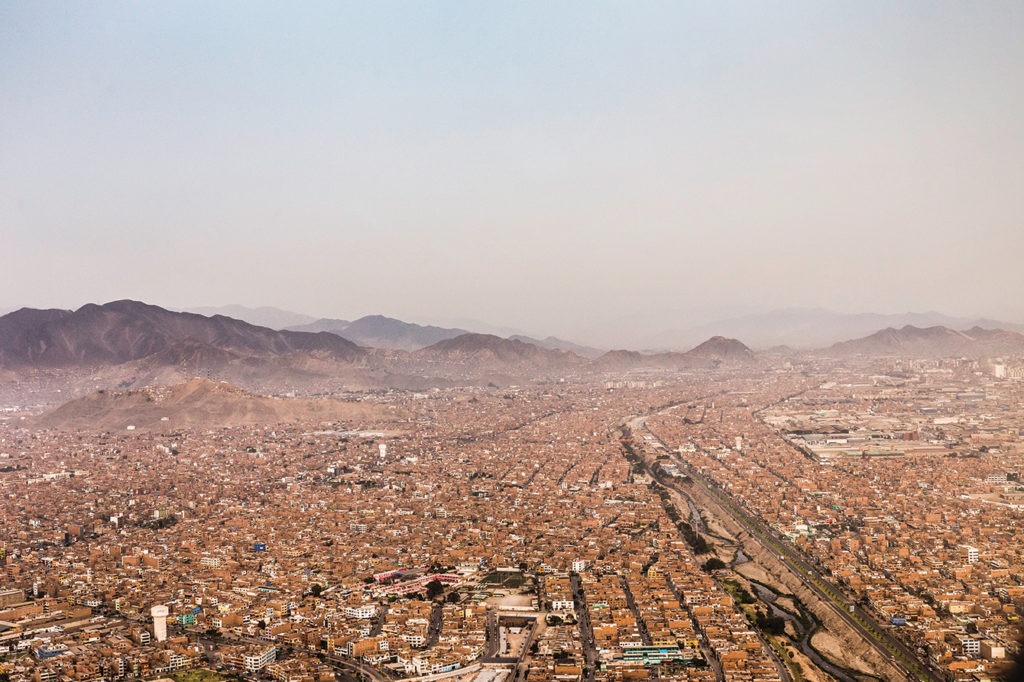
Perched along the Pacific Ocean between Ecuador and Chile, Peru brims with an abundance of riches. From the Incan Citadel of Machu Picchu and the seductive city of Cusco—once the capital of the Inca Empire—to the explosion of the wildly inventive gastronomic scene, this is a country of extremes. Consider the native potatoes alone; there are over 4,000 varieties. And the bulbous corn kernels make North American varieties appear like a speck of dust—a starch lover’s dream.
Spoiled by three distinct agricultural areas (the Andean mountain range, the Amazon jungle, and the coastal stretch) and over 100 ecosystems, Peru is a playground of epicurean bounty melding the sumptuous flavours of many multi-ethnic immigrants (notably Japanese, Chinese, Spanish, and Italian). Revered chefs such as culinary ambassadors Gastón Acurio (Astrid y Gastón), Rafael Piqueras (Maras), and Acurio protégé Virgilio Martínez (Central) have plunged their artistry into this epic biodiversity, and reinvented Peruvian “fusion” cuisine on the world stage. Having achieved near saint-like status, their influence has established Peru as a gastronomical wonderland, searing it into the national identity.
LIMA
In Lima, the nation’s capital, it’s ceviche that will bring you to your knees. And inside the award-winning Perroquet, helmed by chef Danny Rojas, is where guests indulge in the city’s most memorable version, long considered part of the heritage ( June 28th is celebrated as National Ceviche Day). Housed inside the prestigious Country Club Hotel, a cultural monument catering to world leaders and celebrities in Tony San Isidro, and just steps from the swanky beachside community of Miraflores, this is the epicentre of colonial-style elegance, especially during Sunday brunch (reservations recommended).
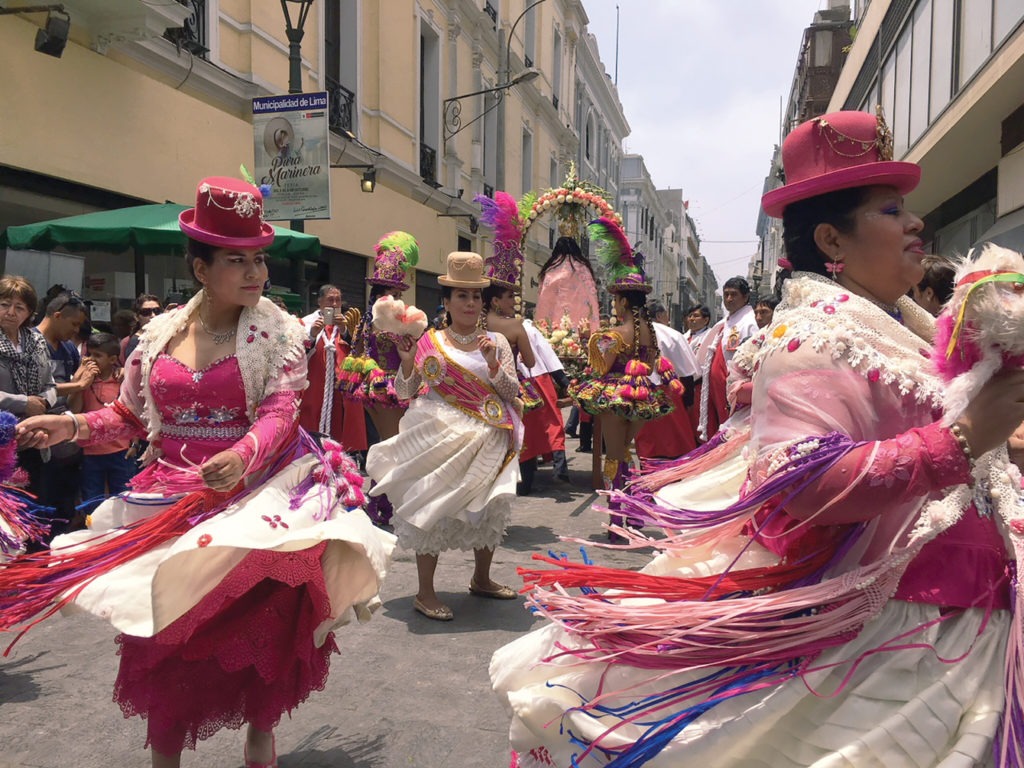
Elevating the ceviche experience, chefs custom-create this delicacy from the essential accoutrements on glorious display. Generously sized corn, seafood, cilantro, and peppers are doused in what is considered the heart of this recipe, leche de tigre (tiger’s milk)—a mélange of freshly squeezed lime, onions, peppers, and salt that morphs with the fish juice into an unmistakable zest. So arrestingly tasty, you may want to sip on your very own glass of this magical elixir along with a pisco sour, the signature cocktail of Peru.
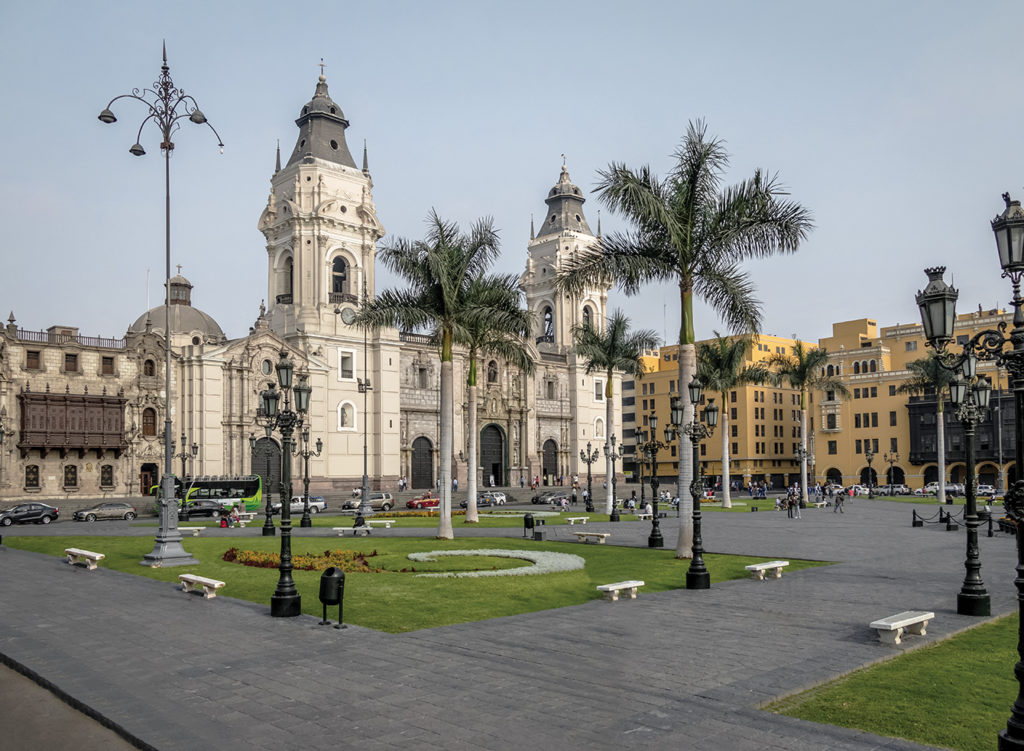
Given the breadth of sightseeing this land generously offers, fuelling up for a day of adventure is wise. First, head to the historical city centre (one of UNESCO’s World Heritage Sites), also known as the “City of Kings”, where an afternoon is spent whirling the Main Plaza, Government Palace, and Santo Domingo Monastery. You may even be fortunate enough to get caught in the bustling Sunday parade, complete with vibrant, flamboyant garb and swoon-worthy sounds pounding the streets—this is what travelling is about.
Some of the finest chocolate in the world comes from the cacao beans of Peru, another one of the region’s bountiful exports. Pop into nearby ChocoMuseo and get briefed on the lavish history of the cacao bean while satisfying your sweet tooth with sundry artisanal chocolate delicacies. And, don’t miss an escapade of shopping at one of the many stores that sprinkle the downtown area. You’ll find a trove of local goodies (including Alpaca hats, rugs, and Inca decor) which are certain to delight any style-minded treasure hunter.
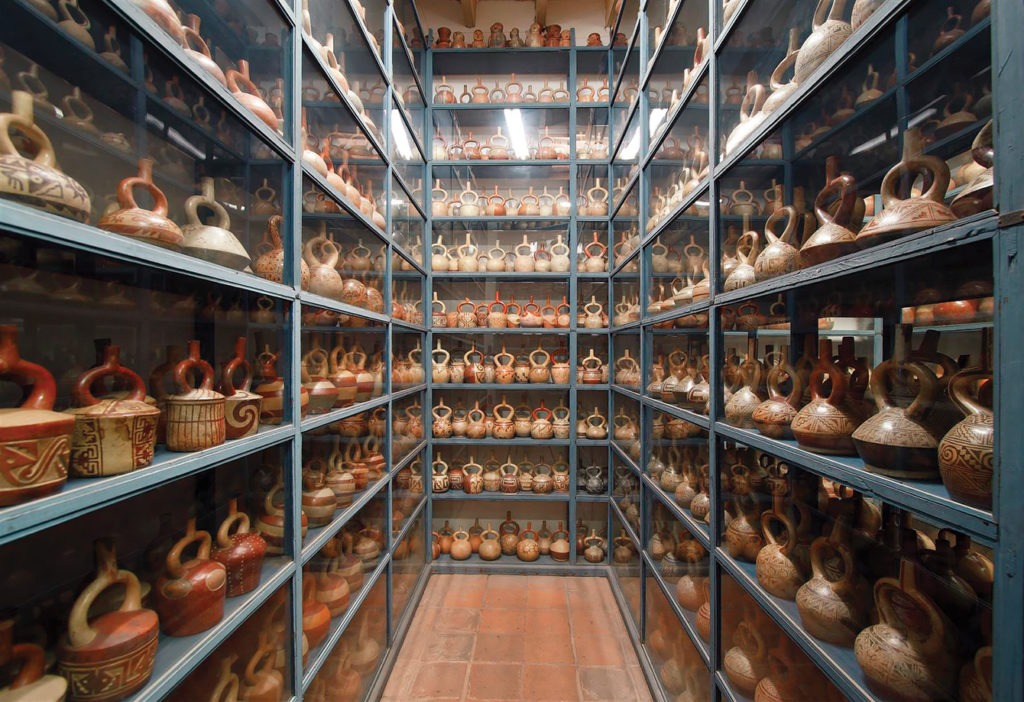
Satisfy your urge to delve deeper into the once-thriving civilizations of ancient Peru with an afternoon at Museo Larco, named after collector Rafael Larco Hoyle. Flanked by bougainvillaea and an endless array of colourful potted plants, this isn’t your typical museum. Boasting the largest private collection of pre-Columbian artifacts, jewellery, textiles, and erotic pottery, the former 18th-century royal estate offers a romantic respite in the bustling city. It’s a lot to digest, but the on-site, Fellini-esque café beckons; it’s the ideal spot for a tranquil recharge, where you’ll dine beneath a pergola draped in voluptuous plants with views of the courtyard garden.
For a taste of modern art, Mate, founded by Peruvian fashion photographer Mario Testino, is in the nearby Barranco and showcases works of established and emerging talent. A haven for artists, this “bohemian” enclave is similar in vibe to SoHo or Venice Beach, and originated as a posh beachside resort for the wealthy. Colourful mansions have given way to distinctive bars, art galleries, restaurants, and boutiques. Dédalo Arte y Artesanía, with its highly curated open space, outdoor café, and rotating exhibitions, is worthy of a visit for one-of-a-kind finds that will appeal to those with discerning tastes.
CUSCO
Of course, it’s impossible to think of Peru without beguiling images of Machu Picchu. Getting there requires a visit to Cusco, situated high in the Peruvian Andes at an elevation of over 11,000 feet (even higher than Machu Picchu, at close to 8,000 feet). And although one of the most magical, magnetic centres of the world beckons, Cusco (yet another UNESCO World Heritage Site in this land of riches) is much more than a gateway.
A mash-up of the Spanish conquest and Andean culture, this is a city oozing with stimulating discoveries and shopping galore. Buttery soft vicuña goods and handmade Peruvian delights at the open-air markets are sprinkled alongside the Cusco Cathedral and Qoricancha (Temple of the Sun), where Inca beliefs of the connection between
earth and heavenly bodies are honoured. In between, venture to one of Chef Acurio’s casual favorites, Chicha, for his take on chicharrón fried pork belly.
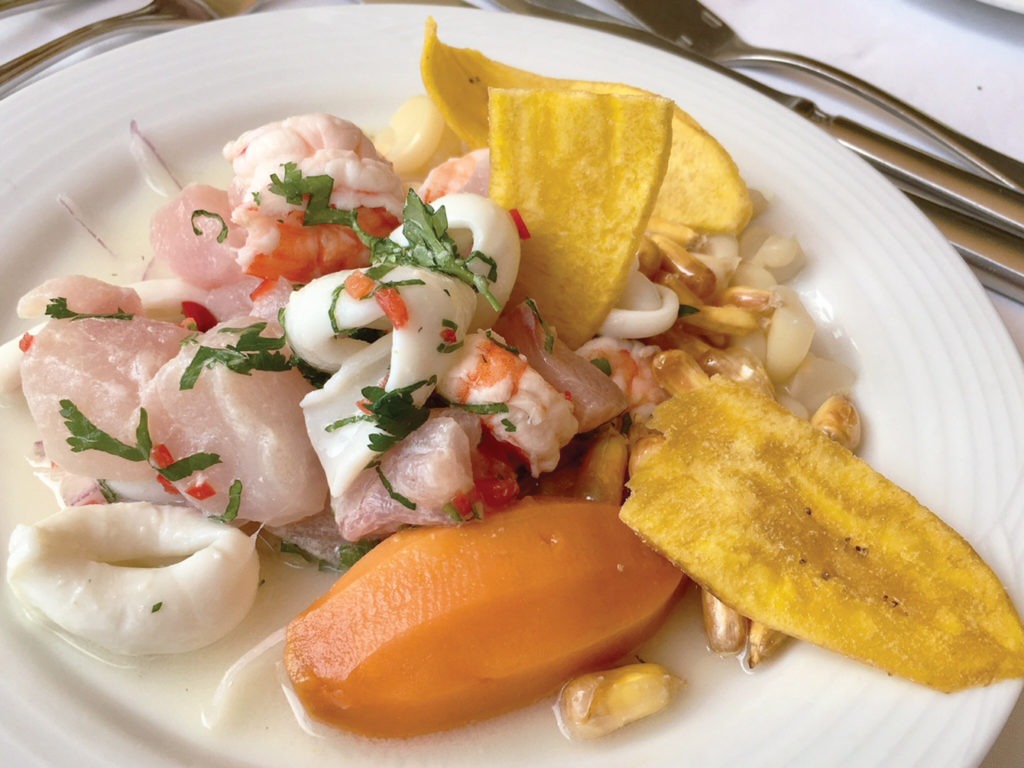
Inching closer to the long-anticipated moment: from there, allow Peruvian Experiences Travel Company to provide a luxury shuttle to Ollantaytambo, where it’s all aboard the first-class cabin of Inca Rail. And, if you’re not in the mood to plot and plan, they can also design your entire Peru itinerary. A mesmerizing less-than- two-hour ride through the lush Andean landscape, complete with chicha morada (made with purple corn) and Inca Kola (a fruity cream soda), appetizers, and live music, transports you to Aguas Calientes (also known as Machu Picchu Pueblo), situated in a deep gorge at the seat of the ruins.
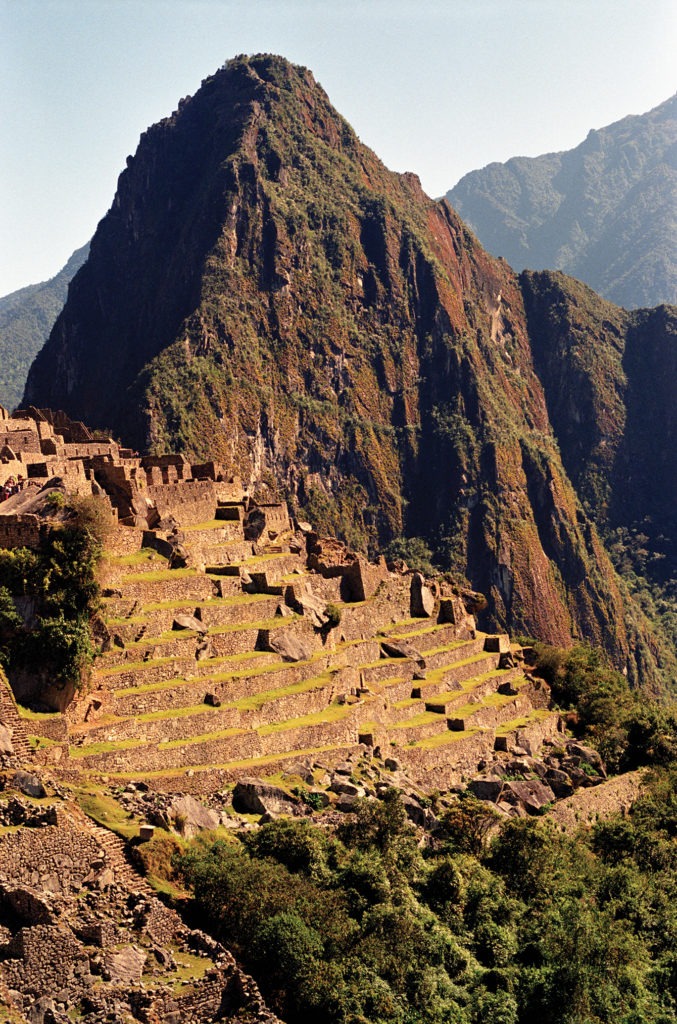
Nestled on the banks of the roaring Vilcanota River amidst towering peaks, ancient trails, and green valleys is the five-star, family-owned Sumaq Machu Picchu Hotel. A sumptuous blend of warm Andean hospitality and exotic decor incorporating the natural elements of water, fire, earth, and air, along with imaginative cuisine under the leadership of Carlos Pardo Figueroa Thornberry, Sumaq Machu Picchu envelops visitors in the enchantment of Inca culture.
With a meaningful understanding of the significance behind this ancient setting, the hotel offers guests the opportunity to bask in the transcendent surroundings through many distinctive offerings with a resident shaman, including a coca leaf reading, Payment To The Earth ritual—the practice of giving thanks to Mother Earth (Pachamama)—and, naturally, a mystical tour of Machu Picchu. From the thrilling bus ride hugging the side of the mountain to the required guide who assists visitors in comprehending one of the Seven Wonders ƒof the World, they have you completely covered. Along with the shaman (request Daniel), who lends a deep layer of spirituality to this celestial quest in the land of plenty, your journey has actually just begun.
